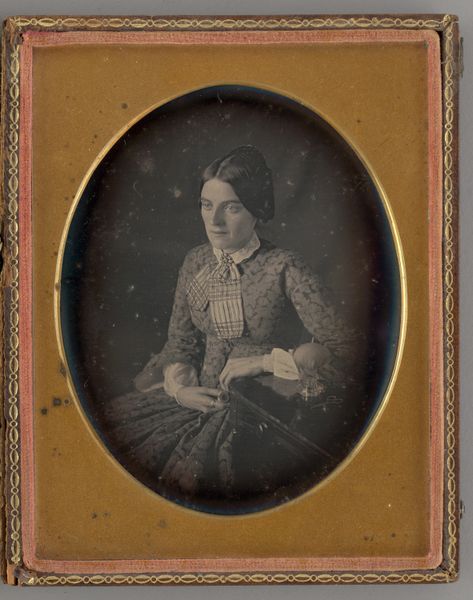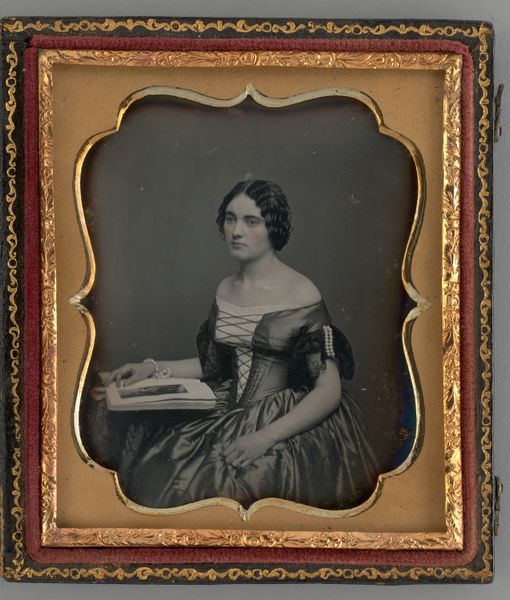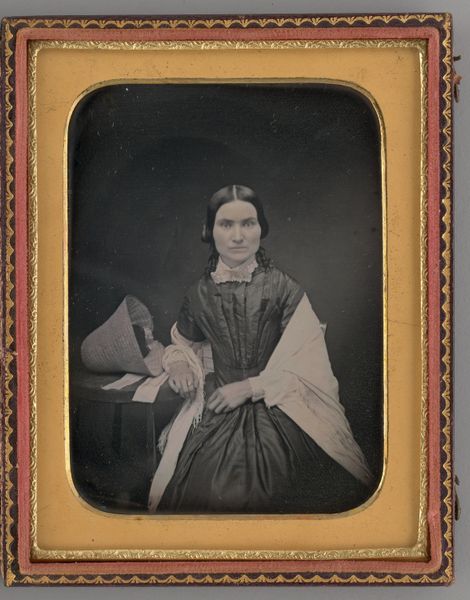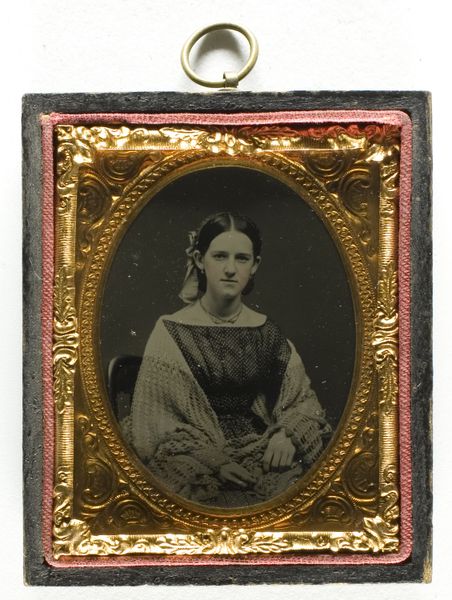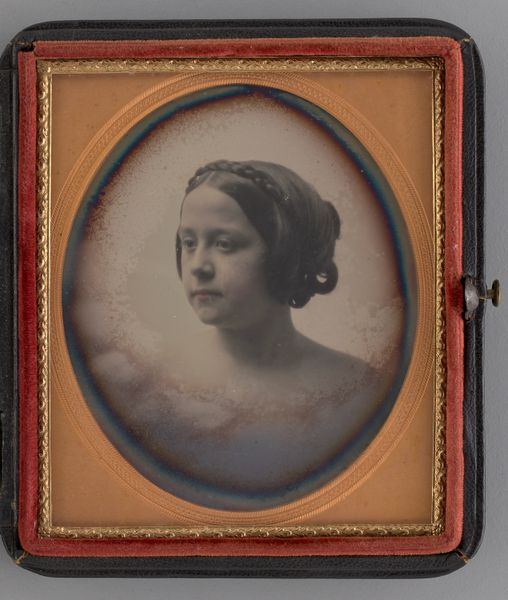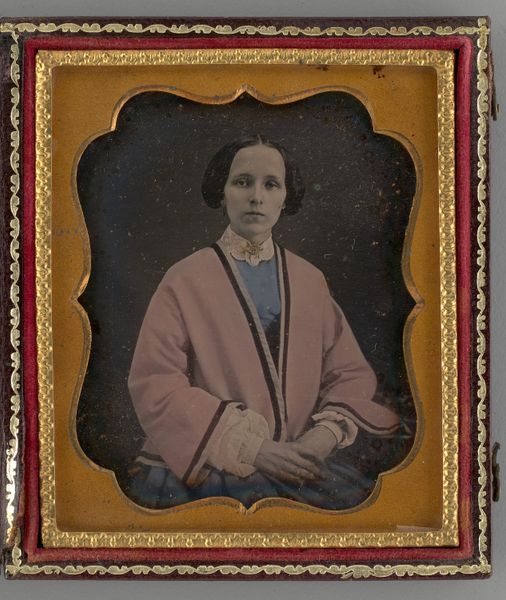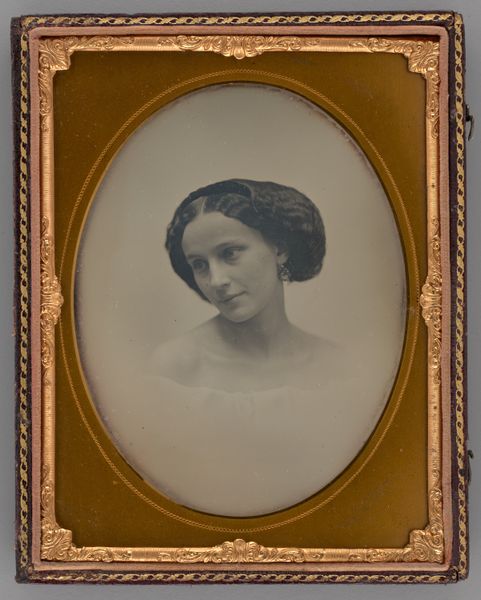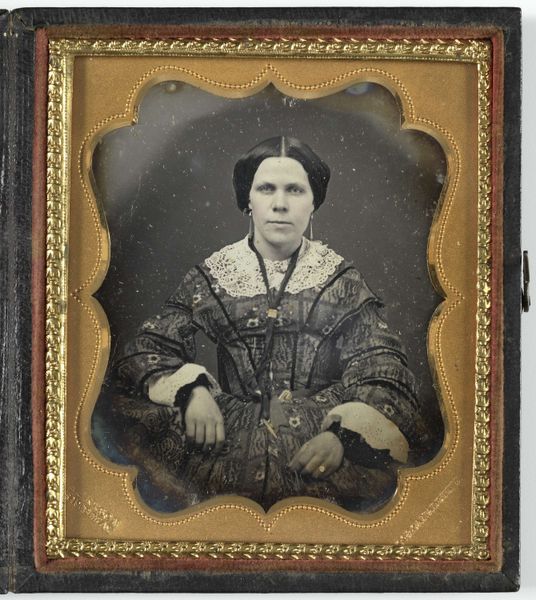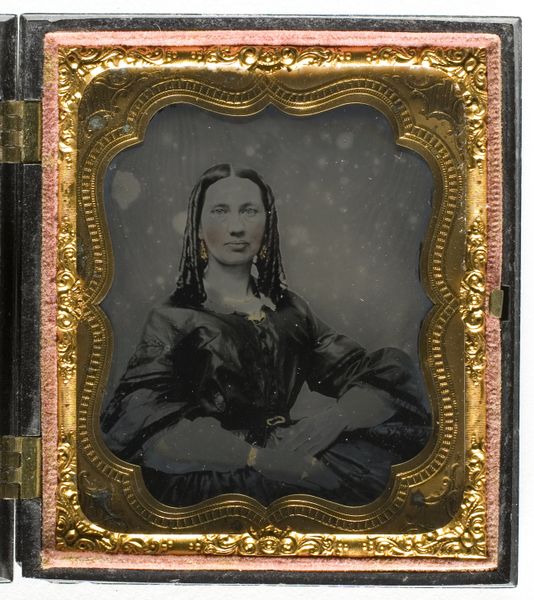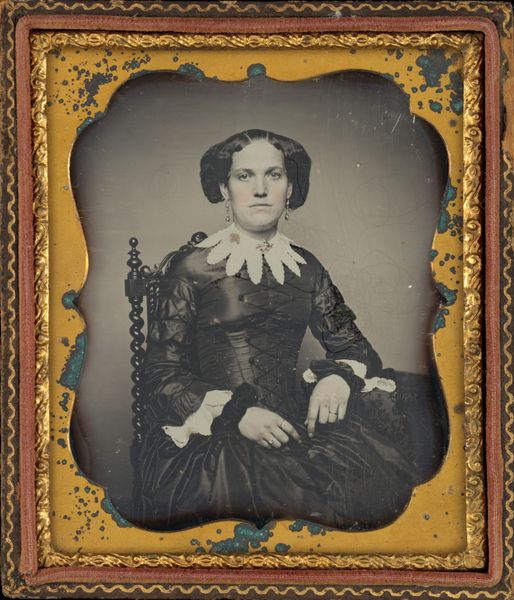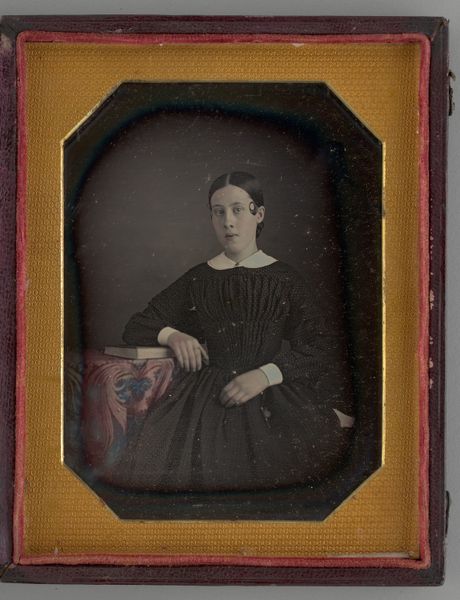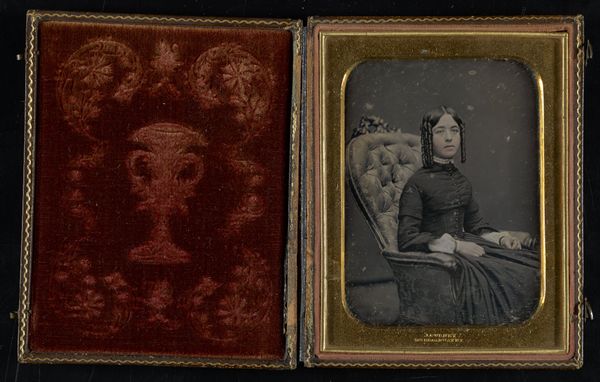
Dimensions: 8.2 × 6.8 cm (3 1/4 × 2 3/4 in., plate); 9.2 × 16 × 1.2 cm (open case); 9.2 × 8 × 1.5 cm (case)
Copyright: Public Domain
Curator: Looking at this image, I feel a profound sense of intimacy and melancholy. Editor: It is an arresting image. We are looking at an anonymous daguerreotype, currently held at the Art Institute of Chicago, created in 1856. The work is entitled *Untitled (Portrait of a Girl)*. It exemplifies a certain romantic aesthetic. Curator: Absolutely, the way the light falls across her face and the subtle shadows evoke a dreamy, almost ethereal quality. One wonders about the socio-political forces shaping gendered representations in mid-19th century America. Is she presenting herself, or being presented by external powers? Editor: Well, daguerreotypes were popular among the burgeoning middle class for their accessible portraiture. Photography democratized image-making, yet it also became enmeshed in the visual rhetoric of status and idealization. Her direct gaze speaks volumes— defiance, maybe even a plea? How might gender or class impact how she presented herself? Curator: That is a compelling reading. It’s crucial to acknowledge how photography, then still quite new, served as both a mirror reflecting societal expectations and a tool to challenge those constraints. The fact that the artist remains unknown shifts the power dynamics even further. The subject, seemingly powerless, yet forever fixed in silver, poses significant questions about ownership and agency in portraiture, doesn't she? Editor: Indeed. Daguerreotypes are fragile objects, sealed under glass and often kept in protective cases. The framing almost suggests that it served as a keepsake, an intimate object within a family's history. We cannot help but question whether we have the right to access her likeness, whether that replicates any dynamics present in the photographic exchange. Curator: This piece embodies larger debates around art, authenticity, and the gaze, forcing us to consider ethical responsibilities when interpreting such work. This brief journey, however, has made the girl a little less anonymous. Editor: I concur entirely. It is fascinating how the simple act of viewing and discussing, breathes life into history, fostering conversations about the sitter’s role and society at large.
Comments
No comments
Be the first to comment and join the conversation on the ultimate creative platform.
